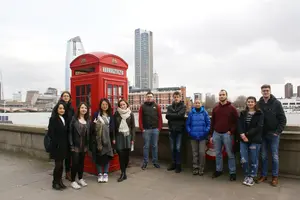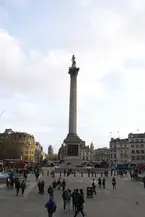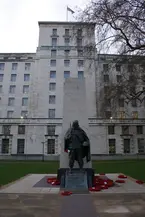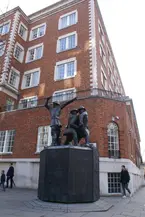Over There: Americans in London During the World Wars
On the first day, we walked along the Thames to study several war memorials that are placed close to the river. Some of these memorials, like the National Submariners’ Memorial, are dedicated to soldiers serving in the World Wars, while others serve as reminders to the wars in Iraq and Afghanistan. On the second and third days, we again studied the transatlantic commemoration of the World Wars with visits to the First World War Gallery in the Imperial War Museum, and to the famous Churchill War Rooms– the bunker Churchill used during the Second World War to design decisive campaigns for the Allied forces. Later we also toured the Benjamin Franklin House– the only European residence of this famous American Founding Father that still exists today. Here, we discussed Franklin’s political efforts at mediating the growing tensions between the British Crown and the American colonies, just months before the American Declaration of Independence, and before Franklin left London for the newly founded United States. The field trip continued with a visit to the “Treasures of the British Library,” where we studied some of the Library’s most fascinating and famous pieces, such as the Magna Charta and letters by Queen Victoria. The last museum we visited together was the Museum of London: Docklands, home to an excellent exhibition on the development of this particular part of the city that also includes an in-depth look at the docklands during World War II.
Through this six-day field trip, we had the chance to get to know a particular transatlantic side of London, and to develop a fresh understanding of how the city was impacted by the two World Wars. We also left London with a greater understanding of how wars are remembered through museum exhibitions, memorials, and other public spaces dedicated to the memory of specific groups of people or military events, and how such mnemonic structures continue to inflect notions of history across national borders. And we walked in the footsteps of Americans like Benjamin Franklin, who made the British capital their home for decisive periods of their lives. It was an eye-opener and a joy to explore the city from this perspective, and some of us are already thinking about their next American-Studies trip to London.
Text and photos by Mareike Spychala.












